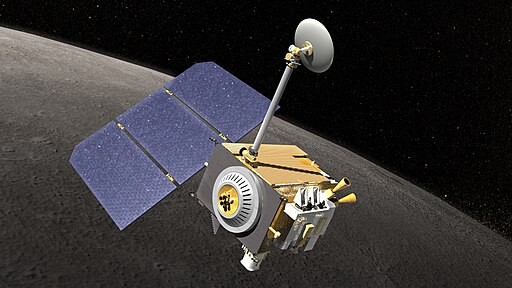Lunar Reconnaissance Orbiter (LRO) has circled the moon since it first entered the lunar orbit in June 2009. For 14 years, the spacecraft has produced images and data using its super-powerful Lunar Reconnaissance Orbiter Camera (LROC), giving us new insights about the moon. At some point during its orbital mission, LRO will no longer exist.

The aging spacecraft has experienced a catastrophic failure of one of its moving parts. However, the big limiting factor for its operational health is the lifetime of its batteries, according to Mark Robinson, the principal investigator of LROC. These batteries do not last forever and are required during solar panel power-reducing eclipses as it travels around the moon.
Regarding the onboard propellant, the veteran probe does not fly on fumes. Fuel-wise, it is predicted to remain in good operating condition for several years. It started its 5th extended mission in October 2022, and the ground controllers have been very clever in managing the LRO fuel.
LRO's Outstanding Contributions
The craft's lengthy tour around the moon has produced many images that reveal lunar scenery from various angles and lighting conditions. The images sent by the probe have led to the discovery of new impact craters. Together with onboard science-sleuthing gear, LRO has also provided an overturn of the topside lunar regolith. This process occurred far faster than previously thought.
Additionally, data from LROC indicate volcanic activities on the moon more than conventional knowledge suggests. LRO imagery also plays a significant role in identifying the best spots to land robotic assets. It even spotted the debris of the Japanese Ispace moon lander Hakuto-R after it crashed on April 25.
The probe's resolving power can help outline future lunar rover expeditions and determine the ideal spots with maximum scientific return. Right now, according to Robinson, NASA is collecting observations of potential human landing regions for the Artemis mission.
Moreover, LRO data are also beneficial in building digital terrain models for U.S. companies that will send equipment to the moon's surface through the Commercial Lunar Payload Services (CLPS) initiative.
READ ALSO: NASA's Lunar Reconnaissance Orbiter Finds the Crash Site of the Chinese Lunar Spacecraft
Future Plans for the Probe
LRO is funded to continue its operation until September 2025, which marks the end of its current extended mission. According to deputy project scientist Noah Petro from NASA's Goddard Space Flight Center, authorities plan to propose a 6th extension requiring operation funds from 2025 through 2028.
Currently, NASA is initiating a concept study to plan the features of a post-LRO orbital mission. One option being considered is the Lunar Exploration Science Orbiter (LExSO) which is expected to fill the gap that LRO will leave behind once it ceases its operation.
Meanwhile, lunar researcher Carle Pieters from Brown University recommends planning for the next generation of orbital observations of the moon. Accumulated digital images from LRO show the changes in the lunar surface. Pieters believe modern sensors can be used to explore the additional details regarding our celestial neighbor's physical and compositional characteristics.
RELATED ARTICLE: NASA Lunar Reconnaissance Orbiter Spots the Most Comfortable Place on the Moon; Will It Be Habitable Like Earth?
Check out more news and information on NASA Mission in Science Times.














